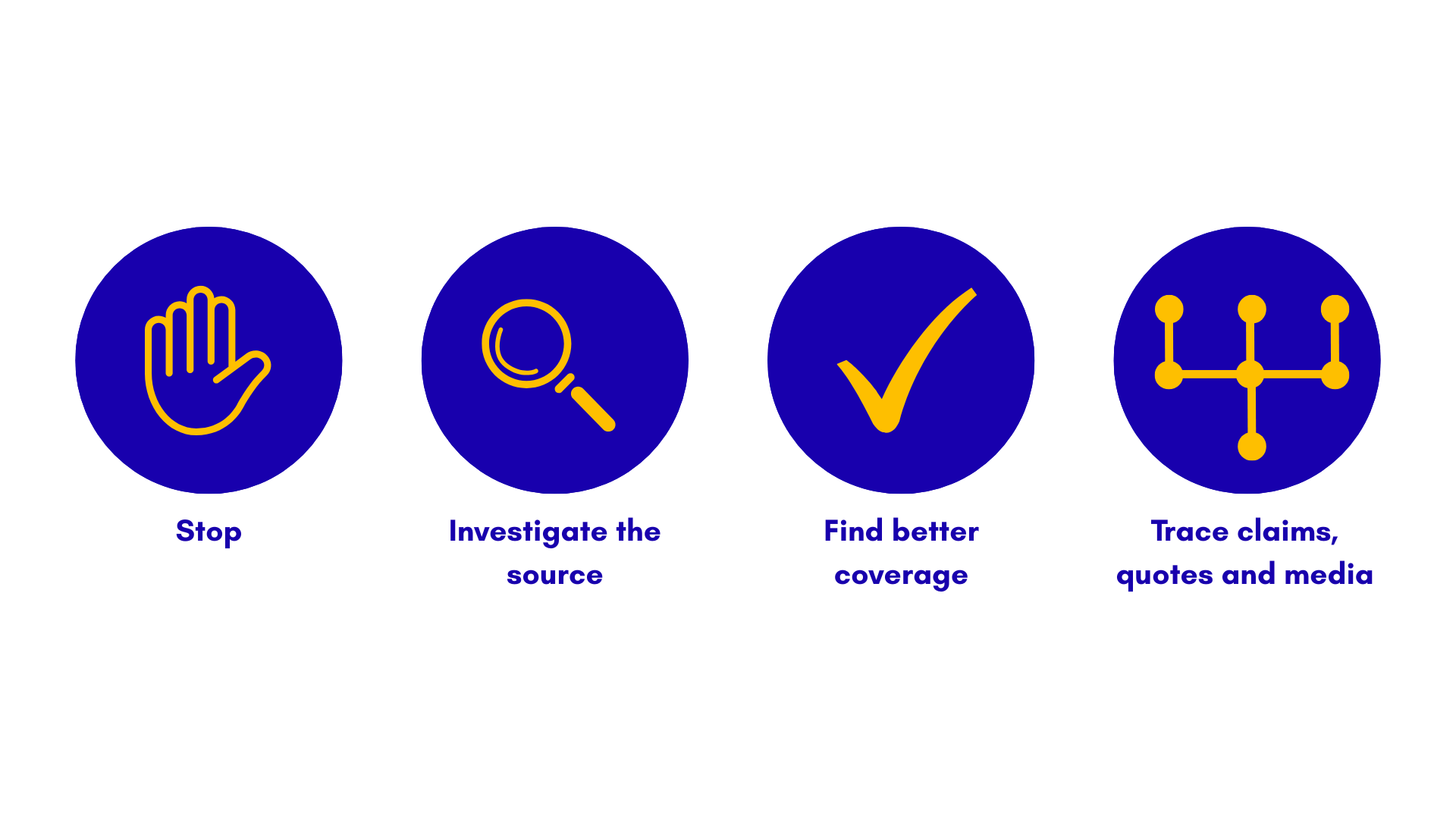How to Use the SIFT Method to Evaluate Online Information (For Students and Educators)
Key Takeaways
The SIFT method helps students evaluate online content for credibility and bias and is standards aligned.
SIFT stands for:
- Stop
- Investigate the source
- Find better coverage
- Trace claims to the original context
Teaching SIFT supports digital literacy, media literacy, and responsible research practices.
With today’s algorithms amplifying misinformation, viral rumors, and AI-generated content, basic research skills aren’t enough. Students need skills to think critically and evaluate the information presented to them. One way students can do this is through lateral reading—the habit of verifying online information by opening new tabs to investigate sources, authors, and claims across the web.
The SIFT method offers a practical, classroom-ready approach to teach this skill. It helps students pause, question, and verify content before sharing or trusting it.
If you teach research, media literacy, or digital citizenship, SIFT is a powerful toolkit for building critical thinking in a digital age.
What is the SIFT Method?
Developed by Mike Caulfield, a digital literacy expert, the SIFT method breaks down the process of evaluating information into four simple moves:
Stop
Investigate the Source
Find Better Coverage
Trace Claims, Quotes, and Media to the Original Context
It’s designed to help users avoid falling for misinformation by promoting critical, lateral reading—opening new tabs to research the source rather than diving deeper into a possibly unreliable page.
How to Use the SIFT Method in the Classroom
🎯 1. Stop
Ask: What is this? Who made it? What’s my emotional reaction?
Before clicking, sharing, or reading deeply, students should pause. Emotional content is often a red flag, especially on social media.
Classroom Tip: Use headlines from viral posts and ask students to identify which ones trigger a strong response and why.
🔍 2. Investigate the Source
Ask: Who is behind this? Are they trustworthy?
Students Google the site or author, not the topic. This shift from "vertical reading" to "lateral reading" is key.
Example Prompt:
“Google the name of the site + ‘Wikipedia’ or ‘Media Bias/Fact Check’ to get a quick overview.”
📰 3. Find Better Coverage
Ask: Is this claim confirmed elsewhere?
Students learn to seek out multiple, reliable sources covering the same issue. If a sensational story appears on only one unknown site, it’s a red flag.
Classroom Activity: Give students a claim and ask them to find a higher-quality source that either confirms or debunks it.
🧩 4. Trace Claims to the Original Context
Ask: Where did this image or quote originally appear?
Students often see recycled or misquoted media. This step helps them find the full quote, study, or image source.
Tool Tip: Use Google Reverse Image Search or Snopes.com to trace viral visuals and claims.
SIFT Quick Reference Graphic
Media Literacy and Standards Alignment
The SIFT method supports multiple sets of standards like Common Core, ISTE, AASL, and CASEL:
Common Core ELA Standards
RI.7.8: Evaluate the argument and specific claims in a text
SL.8.2: Analyze purpose and credibility of information in diverse formats
W.6–12.8: Gather relevant information from multiple sources and assess credibility
ISTE Standards for Students
Knowledge Constructor (3b): Students evaluate the accuracy, perspective, credibility and relevance of information, media, data or other resources.
Digital Citizen (2a): Students cultivate and manage their digital identity and reputation and are aware of the permanence of their actions in the digital world.
AASL Standards (for School Librarians)
Inquire: Build new knowledge by inquiring, thinking critically, identifying problems, and developing strategies for solving problems.
Engage: Demonstrate safe, legal, and ethical creating and sharing of knowledge products independently while engaging in a community of practice.
SEL Alignment
Responsible Decision-Making: SIFT supports students in making informed, respectful choices when engaging with online media.
Self-Management: Encourages students to pause (“Stop”) and regulate emotional reactions to content.
FAQs
Q: What’s the difference between SIFT and CRAAP?
A: CRAAP is a traditional checklist; SIFT emphasizes quick, effective, real-world source-checking using web skills and lateral reading.
Q: Can middle schoolers use SIFT?
A: Yes! With scaffolded examples, even 6th graders can start using SIFT to evaluate TikToks, YouTube videos, and news articles.
Q: Does SIFT work for evaluating AI-generated content?
A: Yes! In fact, SIFT is more relevant than ever with the rise of AI. Students can use the same steps to evaluate whether content is AI-generated, biased, or missing context.
Q: Is SIFT only for evaluating news and media?
A: No—students can use it for YouTube videos, TikToks, viral images, infographics, product reviews, and even scientific claims.
Conclusion
The SIFT method gives students a real-world skill they’ll use for life: how to think critically about what they read online. As AI-generated content and misinformation continue to grow, teaching SIFT is no longer optional—it’s essential.
Includes: Printable posters, lesson slides, and student worksheets.


